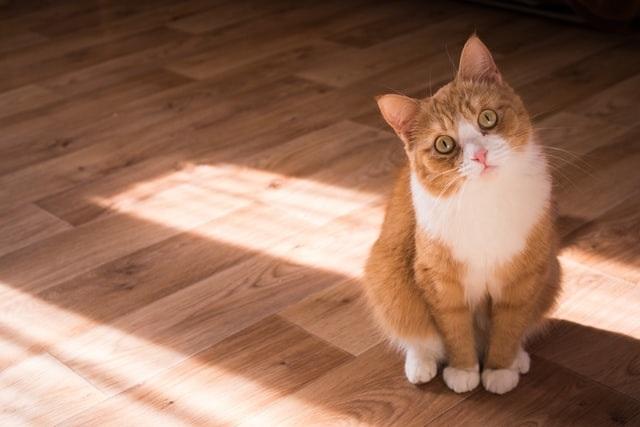猫咪通常被认为是比较独立的动物,大多数人认为猫很冷漠,过着相当孤独的生活,好像在它们眼里并没有“主人”这个概念,更不会对人有什么依恋性,但是,俄勒冈州立大学的一项研究发现,事实并非如此。

[Photo/Unsplash]
Cats have a rotten reputation as a cold and distant domesticated animal — at least compared to their main competitor, known as “man’s best friend(dogs).”
作为一种冷漠而疏离的家养动物,猫咪的名声并不太好,至少与它们的主要竞争对手,“人类最好的朋友(狗狗)”相比是这样。
But felines do feel affection towards their humans, they simply express it differently — and it’s not just cat people saying it! Now there’s science to prove it, too.
但猫科动物确实是喜欢人类的,只是它们的表达方式不同——而且不仅仅是养猫人士这么说!现在也有科学证明了这一点。
Oregon State University researchers concluded that cats really do actually love their humans — or at the very least, see them as parents or caregivers — after conducting a study on kittens, modeled after previous research on dogs and babies.
俄勒冈州立大学的研究人员模仿此前对狗狗和婴儿的研究,对小猫咪也进行了一番研究,并得出结论:猫咪真的真的很爱主人——或者至少是把主人看做父母或“照顾者”。
The study, published in Current Biology, examined how kitten subjects reacted after spending two minutes with their caretaker, being left alone, then reuniting for another two minutes. After the experiment, they categorized each kitten by the attachment styles assigned to human babies and dogs in previous studies — secure, ambivalent, avoidant, and disorganized.
这项发表在《当代生物学》上的研究测试了小猫在与看护人呆上两分钟后被单独留下,然后和看护人重新团聚两分钟之后的反应。实验结束后,研究人员根据此前研究中给人类婴儿和狗狗划分的依恋类型对每只小猫进行分类——安全型、矛盾型、回避型和无序型。
64 percent of the kittens demonstrated a “secure attachment style” to their caregiver, meaning the cat seemed distraught when they left the room but “displayed a reduced stress response” upon their return.
64%的小猫对他们的看护人表现出“安全依恋”,这意味着当看护人离开房间时,小猫看起来心烦意乱,但当看护人回来时,小猫的“应激反应表现得到缓解”。
On the other hand, about 30 percent of the kittens were found to have an “insecure attachment style,” which means their stress levels did not decrease upon their person’s return to the room. That said, this split is consistent with the literature on human children — so the smaller percentage with insecure attachment styles is not specific to cats, contrary to popular belief. Also of note: The percentage of cats with “secure” attachment styles is actually higher than dogs’ — only 58 per cent of dogs demonstrated the “secure” attachment, while 42 percent were categorized as insecure.
另一方面,大约30%的小猫出现“不安全依恋”,这意味着当看护人回到房间时,小猫的压力水平并没有降低。也就是说,这种划分比例与对人类儿童的研究文献是一致的——因此,与普遍观点相反,较少比例的不安全依恋型并非猫咪特有的。同样值得注意的是:“安全依恋型”的猫咪比例实际上高于狗狗——只有58%的狗狗表现出“安全”依恋,而42%被归类为“不安全依恋”。
What’s more, cats’ behavioural patterns remained consistent when the OSU team recreated the experiment with a group of fully grown cats. Thus: Kittens and cats show the same level of affection to their caregivers as human babies, and maybe even slightly more than dogs.
更重要的是,当该研究团队用一组成年猫重新进行实验时,猫咪的行为模式保持一致。因此:小猫和成年猫对看护者的爱恋程度与人类婴儿相同,甚至可能比狗略高。
来源:《独立报》编辑:董静
来源:中国日报网
,




